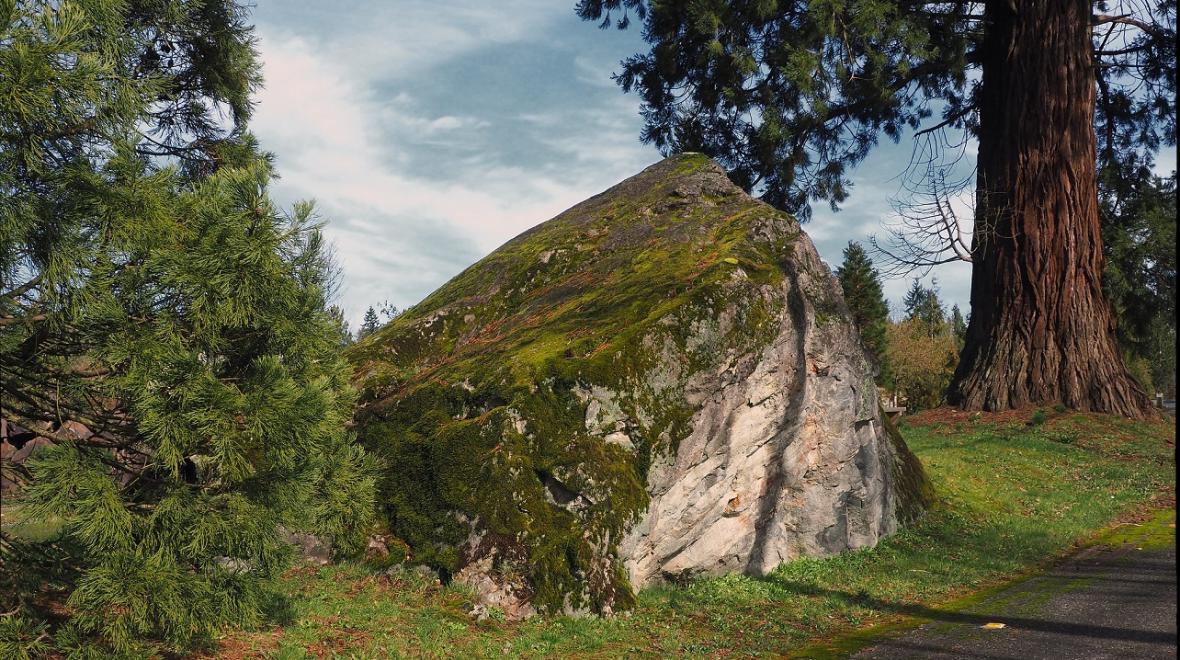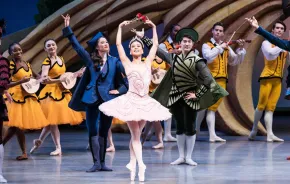
Photo:
Duvall's Big Rock. Credit: John Gateley/Flickr CC
Big rocks... rock!
Like an old-growth tree, a magnificent rock has a presence about it — a spirit, if you will. You don’t have to understand geology to commune with a great rock — or scramble up it and stand victorious on top — but knowing a little about the forces that created and shaped such rocks can turn a big boulder into a real-life natural history experience.
Skip ahead to go straight to the giant rocks, or scroll down for some history on these nifty erratics.
Wandering rocks
When the glaciers advanced into the Puget Sound region 2 million years ago, the major features of our Northwest landscape — the volcanoes, mountain ranges, rivers and basins — already existed. The glaciers, colossal sheets of ice on a continental scale, scraped and sculpted the terrain with cycles of freezing and flooding.
As the ice advanced, sheering cliffs and cutting ravines, the glaciers picked up hunks of rock and carried them along. When the ice melted, these rocks were left miles away from their place of origin.
Rocks that have been transported by glaciers are called erratics because they have landed somewhere far from their natural homes.
The term erratic is typically applied to large, irregularly shaped boulders that, upon close inspection, are unlike any of the other rocks in the area. They often contain veins of minerals and other unusual surprises, such as fossils.
Technically, a pebble transported a great distance by glacial activity can also be considered an erratic, but these are harder to notice. And people sometimes refer to large landscape rocks as “urban erratics,” which is fun but not really correct, as glaciers had nothing to do with their turning up in your garden.
Geologists, natural historians and friends of rocks (and kids who like to climb stuff!) prize naturally placed erratics because these unusual rocks provide important clues to the geology of our region — and plenty of fun.
“Yeah, erratics are pretty cool,” agrees David Williams, urban geologist and author of “The Seattle Street-Smart Naturalist and Stories in Stone.” “They reveal the power of ice, not only to sculpt the land, but also to act as giant trucks moving huge rocks, tens or hundreds of miles. I think it's something every kid can relate to.”
Climbing boulders
Like climbing trees, scrambling atop big rocks is one of those genuine childhood pleasures that these days, with our nature deficiency, we have to schedule into the family program.
It’s okay to encourage kids to climb rocks! And it’s cool for grown-ups to climb rocks, too. For a quick afternoon pick-me-up in any season, there’s nothing like scaling a boulder to elevate energy and make you want to woot! with joy.
Climbing tips: Use your best judgment. Some erratics are more scramble-friendly than others. Some are just too big to climb safely without proper climbing equipment; others are in balance with a fragile ecology, so be mindful of their lichen, moss and ferns. Some have been posted with signs prohibiting climbing.
Even if you can’t climb, whenever possible, touch the rock, lean against it, smell it, measure it against your body. Take time to inspect it closely for fossils and minerals as well as interesting mosses and lichens. Introduce yourself to the rock. Make friends.
Now let’s go climb some rocks!
Scroll through the image arrows above to see a few big rocks you can easily make friends with. Stop by for a climb or a pat when you are in the area, and be sure to say hello.











